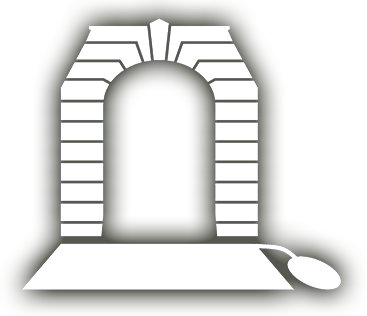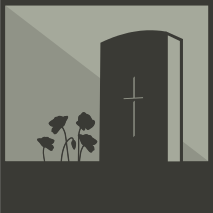YOUNG, Hem
| Service Number: | 3018 |
|---|---|
| Enlisted: | Not yet discovered |
| Last Rank: | Private |
| Last Unit: | 49th Infantry Battalion |
| Born: | Gympie, Queensland, Australia, 14 April 1896 |
| Home Town: | Not yet discovered |
| Schooling: | Not yet discovered |
| Occupation: | Farmer |
| Died: | Scarness, Queensland, Australia, 18 February 1980, aged 83 years, cause of death not yet discovered |
| Cemetery: |
Maryborough Crematorium, Queensland , Australia Wall Section M1 |
| Memorials: |
World War 1 Service
| 29 Oct 1916: | Involvement Private, 3018, 49th Infantry Battalion, --- :embarkation_roll: roll_number: '19' embarkation_place: Brisbane embarkation_ship: HMAT Marathon embarkation_ship_number: A74 public_note: '' | |
|---|---|---|
| 29 Oct 1916: | Embarked Private, 3018, 49th Infantry Battalion, HMAT Marathon, Brisbane |
Wilfred Hem Jen Young - Courtesy Lina Rossow
Wilfred Hem Jen Young was born 14th April, 1896 at his parents home in Long Flat, Gympie.Hem Young edit2
He attended the Lagoon Pocket School and until the school was closed, he name appeared upon the Honours Board, honoring all former students who had fought in World War 1. Contrary to earlier beliefs, Hem (known as Harry) never fought in the Gallipoli campaign. After leaving school, Harry worked on his brother George’s farm, near Kilkivan.
Harry enlisted on the 26th June, 1916 – his age is listed as 21 yrs, 3 mths but he was only 20 yrs and 2 mths. It was not uncommon for men too young to enlist to lie about their ages in order to enlist and with his father away in China at the time of his enlistment, who was going to stop him.
The following is a summary of his two year service with the AIF, 49th Battalion, enlistment number 3018 as taken from official records obtained from the Australian War Memorial. 26.06.16 – enlisted; 27.10.16 embarked from Brisbane “A74 Marathon”; 12.02.16 AWOL from parade; 09.01.17 disembarked Plymouth; 16.02.17 SICK, group hospital, Godford from 13th Infantry Battalion; 11.03.17 rejoined 13th Infantry Battalion from Parkhouse Hospital, Godford; 08-09.03.17 proceeding overseas to France from Folkstone; 12.05.17 marched in Etaples; 19.05.17 Rejoined unit 49th Battalion, Etaples; 07.06.17 wounded in action; 09.06.17 admitted to field hospita; l19.06.17 embarked to England from France aboard “St Patrick”. Admitted to Hill House Military Hospital, Ramsgate with compounded fracture of elbow; 24.08.17 discharged from hospital for furlough until 07.09.1715.09.17; AWOL from 3.30pm 07.09.17 – 08.09.17; 20.10.17 proceeded overseas to France from Sandhill Camp, Longbridge, Deverill, Southampton; 03.11.17 rejoined unit in France; 06.04.18 – 08.04.18 admitted to 26th General Hospital – sick; 11.05.18 discharged to base; 25.05.18 rejoined unit from hospital to field; 13.07.18 detached for special duty in Paris, Guard of Honour; 20.07.18 rejoined unit; 11.08.18 wounded in action, multiple wounds, Left thigh, right knee, right shoulder, fingers; 13.08.18 admitted to general hospital, field; 17.08.18 proclaimed invalided, returned to England; 18.08.18 Admitted Beaufort War Hospital, Bristol; 20.09.18 transferred to 3rd Auxilery Hospital, Dartford; 21.09.18 furlough from 21.08.18 – 05.10.18; 05.10.18 AWOL; 06.10.18 reported to administrative headquarters; 17.01.19 advised returning to Australia; 05.02.19 disembarked Brisbane from “Aeneas” list no. 188; 19.03.19 formally discharged by MD with medals received British War Medal – issued 24.03.1920; Victory Medal – issued 23.05.1918; While recuperating from his wounds in Hill House Military Hospital he met a young English nurse, Alice Norah Harris. Known as Norah, she was born in Tenterdon, Kent but was living with her family in Ranelagh Rd, Deal, Kent. After a brief stay at the family home in Long Flat, upon his return, Harry followed his brother Ben to the South Burnett where together they took up farming and forged out the beginnings of the peanut industry for which the Burnett became famous.
Not forgetting his lover back in England, once he had established the farm and built a small cottage for them to share, Harry proposed to Norah by letter. When he received her reply of “Yes”, he sailed back to England where they were married at St Leonards Church, Deal on the 24th November, 1924 and then set sail back to Australia to begin their new life together.
“When Queenslanders think of peanuts they think of former premier Mr Joh Bjelke-Petersen. But although he was the most famous peanut farmer Kingaroy has produced, he was far from the first. That honour went to Ben and Harry Young, the sons of a Cantonese father, Ah Young, who married an English girl he saved from a shipwreck while en route to the Kalgoorlie goldfields. The Young brothers moved to Memerambi, north of Kingaroy, in 1919 and immediately planted 2ha of peanuts. Back then, the peanut was a stranger to the palates of most Australians and was mainly used by the Chinese community in peanut oil and peanut cakes … by 1929 Harry cobbled together one of the first peanut threshing machines (he had been using a wheat thresher) from recycled materials on their farm. Used until 1950s, it still exists today and is the prize exhibit at the Kingaroy Heritage Museum…”
After more than 40 years and three children, Una, Daphne and Wilfred, Harry gave up farming and began his next great adventure, building a retirement home for he and Norah on the Esplanade at Hervey Bay. The building of the flats in Scarness made the local news … twice.
“When it comes to do-it-yourself building, it would be hard to beat the work done by two Hervey Bay men, both 75 years old. They are a former Kingaroy peanut farmer, Mr Hem Young of Scarness, and a former Dutch metal worker, Mr Hendricus Philippa of Urangan … Mr Young has spent the last 15 years building a block of four brick flats on The Esplanade. This has involved him in laying 50,000 bricks, he estimates and using 320 bags of cement on the first floor alone. Now after all this time, the end of the work is in sight. the interior finishing of the fourth and last flat is well on the way and Mr Young thinks it will take him only two more months to complete. He has done all the work involved in the flats himself, from bricklaying to tiling, from laying the concrete floors and roof to welding balcony rails, from carpentry to putting in the windows, from scaffolding to plastering…”Hem Young edit1
What must be ranked as the greatest labour of love has just been completed by a Scarness man. For Mr Hem Young has just completed the building of four flats on The Esplanade – a job that has kept him busy for 13 years … Time generally was the least of his problems. “I built the flats myself mainly because I wanted something to do when I retired from my farm at Wooroolin”, Mr Young explains. “I wasn’t in a hurry”. His plans for all leisure he is going to have now? “Well, I plan to do a bit of fishing now”.
Harry Young passed away on the 18th February, 1980, his wife Norah two years later on the 03rd May, 1982. They were cremated and their ashes laid to rest at the Maryborough Lawn Cemetery.
Written by Granddaughter - Linda Rossow
Submitted 1 October 2025 by Carol Berry









